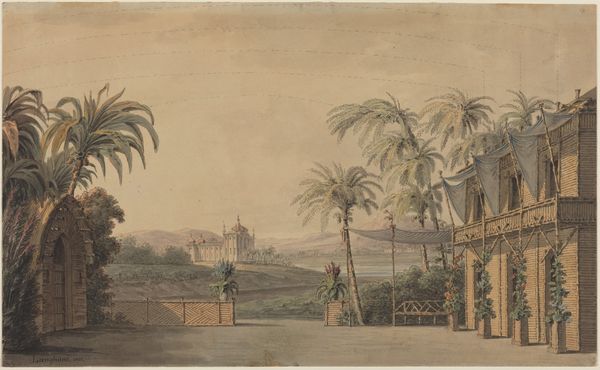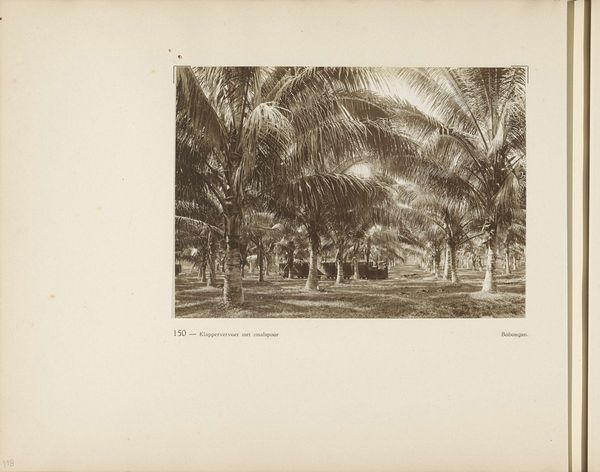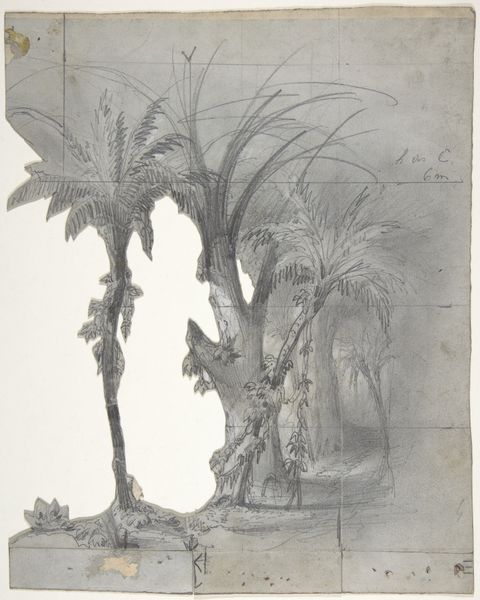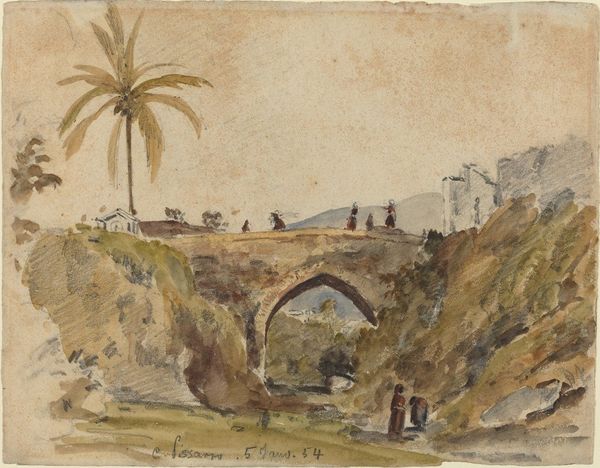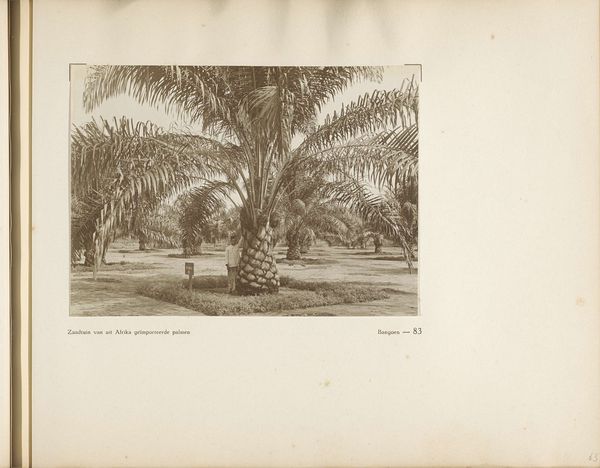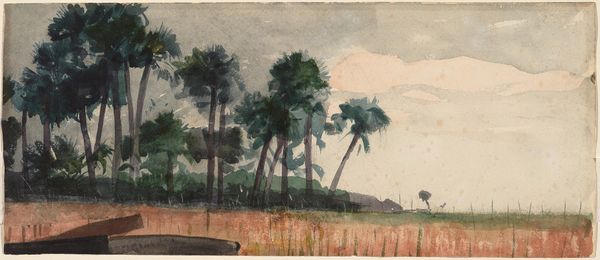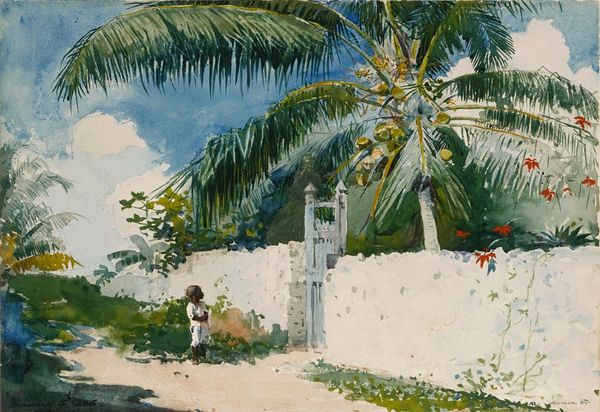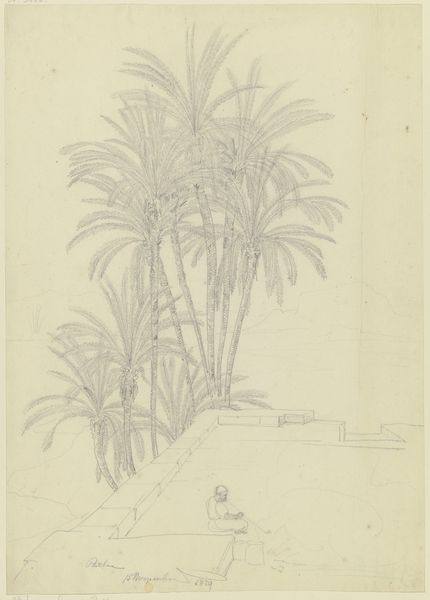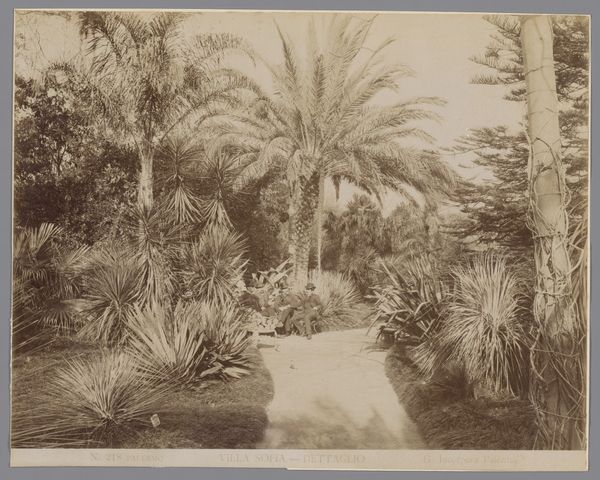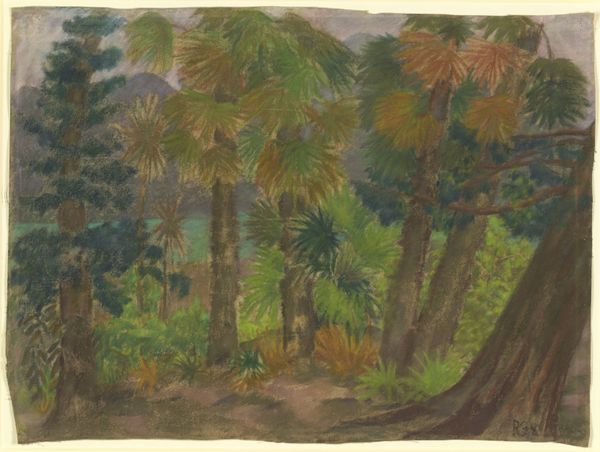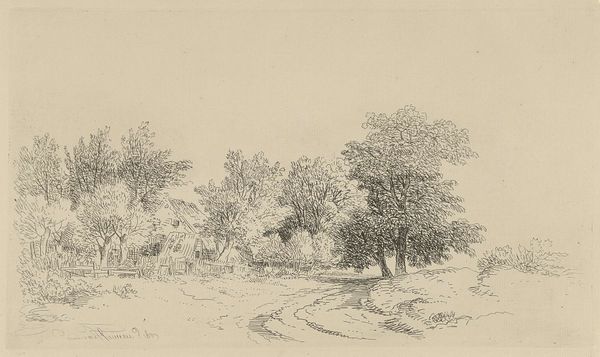
#
possibly oil pastel
#
coloured pencil
#
underpainting
#
watercolour bleed
#
watercolour illustration
#
green and neutral
#
mixed medium
#
botanical art
#
watercolor
#
warm toned green
Copyright: Rijks Museum: Open Domain
Curator: I focus on the materiality of art. How it's made, from what, and the circumstances of its creation are key to understanding its meaning. Editor: Okay. Here we have Willem de Famars Testas' "Oasis with Palm Trees," likely created between 1858 and 1860. It looks to be watercolor and pencil. The whole piece feels very immediate and personal, like a page torn from a travel journal, especially with those separate palm studies to the right. What catches your eye in this piece? Curator: What I find compelling here is the apparent study of process itself. You see the layered application of watercolor, the visible pencil underdrawing. The materiality speaks volumes about artistic labor and the construction of representation. Do you notice how the artist hasn't concealed the skeletal underpainting? Editor: I do see that! It’s like he’s revealing his working process, making the ‘how’ as important as the ‘what.’ Is it fair to say that by exposing these material elements, Testas challenges traditional distinctions between, say, 'finished' art and preparatory sketches? Curator: Exactly! He disrupts the idea of a seamless, illusionistic image. The "flaws" become integral. What does this suggest about the consumption of art by the rising middle class in the 19th century? Perhaps a growing interest in the artist's studio practice itself? Editor: That's an interesting point. By showcasing the process, he could be both demystifying and valorizing the artist's hand. So, rather than just admiring the exotic scene, viewers are invited to contemplate the labour and materials involved in its depiction. Curator: Precisely! Considering the time, the paper itself was likely manufactured under specific socio-economic conditions, affecting availability and quality, and impacting the accessibility of art-making. Understanding that brings context to the piece. Editor: Wow, that’s really given me a fresh way of looking at something seemingly straightforward. I never considered how much the actual materials contribute to a work’s meaning and broader context. Curator: Seeing the materials and means of production illuminates hidden histories. And maybe, it leads us to appreciate the artistry in seemingly simple things.
Comments
No comments
Be the first to comment and join the conversation on the ultimate creative platform.
